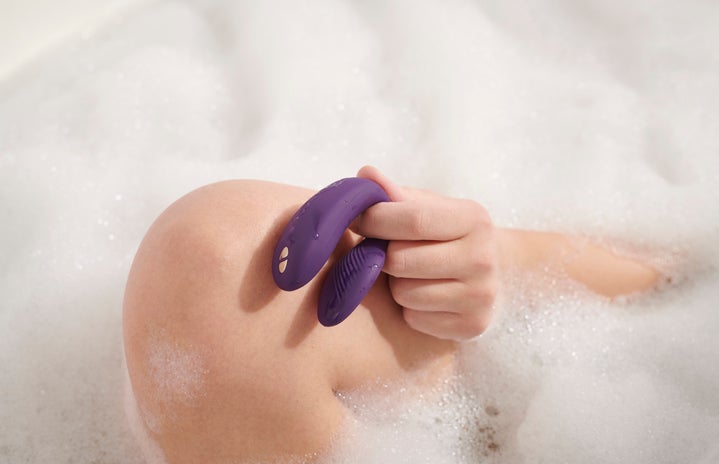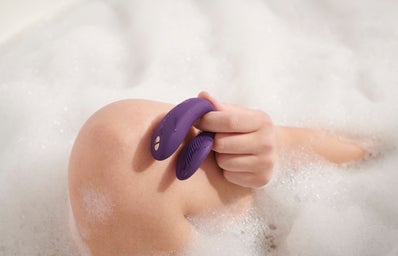In our modern-day lives, the sex revolution brought on by feminist activism, birth control, and the societal push for equality has transformed how we approach female sexuality. However, throughout history, female sexuality has always been noted as having ambiguity and being a great mystery. Some societies like the ancient Greek have often deemed orgasms a critical and pleasurable part of life. For others, it has been an outlandish burden that women must suppress. Regardless, many agree that women’s bodies never really belonged to them. Orgasms, reproductive systems, and sexuality have all been wielded and controlled to bolster the patriarchy and uphold male satisfaction. That’s not to say women don’t assert their own sexual rights and seek pleasure. In fact, gorgeous vibrators and sex toys for personal and coupled use have been around for a longer than we think they have.
To understand the history of the vibrator, we must travel back in time to 12 000 B.C. Dr. Hallie Lieberman wrote a novel in 2017 titled Buzz: A Stimulating History of the Sex Toy, where she talked about how archeologists had discovered eight-inch carved phalluses dated thirty thousand years ago. These creations feature tattoos, piercings, and foreskin, making it difficult to label them as anything other than ancient dildos.
Moving forward in our historical timeline, we see how sexual pleasure changes as new forms of enjoyment are developed. For example, Brenda Love’s Encyclopedia of Unusual Sex Practices states that in 69-30 B.C., Cleopatra used jars filled with bees to create a vibrator for her clitoris. Though this statement remains highly contested, it’s incredibly fascinating to think of our ancestors’ ingenuity.
In sixth century B.C. of ancient Greece, an entirely new understanding of female sexuality emerged. The word hysteria became popular, derived from the Greek word hysterika, which means “uterus.” At the time, physicians believed that the uterus was to blame for various female ailments. Unfortunately, that rhetoric never left. Though this was a prevailing idea, it did not stop women from totally enjoying themselves with dildos entirely made of bread covered in olive oil which functioned as lube. This creation was dubbed the olisbo-kollix, meaning “the breadstick dildo.” To discover more about the fascinating sexual environment in Ancient Greece, check out Viki Léon’s novel The Joy of Sexus: Lust, Love, and Longing in the Ancient World.
Simultaneously, the Kama Sutra published in Ancient India served as a guide to enhance sexuality and eroticism in marriages. Though this literature is popularly known for discussing sex positions, it discusses all aspects of a healthy sexual relationship from topics such as courtship to the importance of shampooing one another’s hair. In the event a man cannot satisfy a partner, the Kama Sutra recommends a strap-on dildo.
By the middle ages, female sexuality and pleasure were condemned by religion, and when Heinrich Kramer and James Sprenger published the Malleus Maleficarum. This book specifies how to prosecute witches and even dubs the clitoris as “the devil’s teat.” However, the Victorian era transformed this idea. This is where we really see the metamorphosis in “the big O.” In 1869, Dr. Joseph Mortimer Granville created what we officially know now as the vibrator. Unfortunately, this tool was used in doctors’ offices to cure women’s “hysteria” by inducing orgasms after doctors were exasperated from having to manually stimulate the clitoris. By the start of the 1900s, companies started producing vibrators for women to use in the comfort of their own homes without medical intervention, which has brought us to the wide variety of sex toys and vibrators we have today.
Products like the Hitachi magic wand, silicone dildos, magic bullets, and the rabbit vibrator opened avenues for women to explore their sexual health and wellness. They also helped women regain the control they were robbed of for so long. If you check out the bookstore Indigo, you’ll see a display of vibrators and sex toys in their wellness section for women to enjoy. By adding this display, the popular book chain is helping shift the negative social narrative behind sex toys and bringing positive notions to female sexuality. From personal massagers by the company LELO to coupled date night sets by WeVibe, the sex industry has definitely taken off and is here to stay.
Ultimately, the history of sex toys and orgasms is an intricate and fascinating topic in which researchers uncover new things every day. If you’re interested in learning more about sexology, check out the podcast Betwixt The Sheets by Kate Lister and her novels A Curious History of Sex and Harlots and Whores & Hackabouts: A History of Sex for Sale. Dr. Justin Lehmiller’s podcast Sex and Psychology and Michel Foucault’s novel The History of Sexuality are also fantastic education choices.


